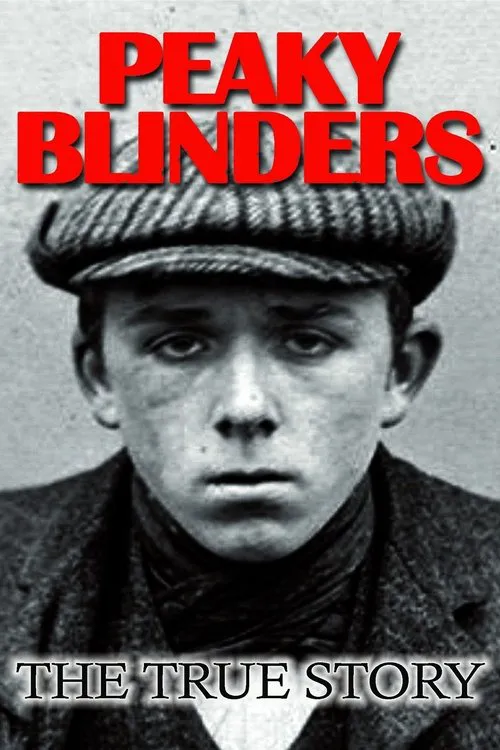Peaky Blinders: The True Story

Plot
The term "Peaky Blinders" is often associated with the popular British television series that premiered on BBC Two in 2013. However, the story of the real Peaky Blinders is far more intriguing and rooted in reality. The series, created by Steven Knight, is loosely based on a gang from Birmingham, England, that was active during the late 19th and early 20th centuries. In Peaky Blinders: The True Story, the film delves into the fascinating history of the real gangsters who inspired the series and the events that led to their notoriety. The Peaky Blinders were a real gang from Birmingham's streets, primarily composed of young men hailing from the city's working-class neighborhoods. They got their nickname from their distinctive fashion sense, characterized by a peaked cap, known as a "flat cap" or "peaky." These early 20th-century gangsters were involved in small crimes, such as pickpocketing, burglary, and street fights, and were often at odds with the local police and rival gangs. One of the key figures behind the real Peaky Blinders was a mysterious crime family from Birmingham's Small Heath neighborhood. This crime family, consisting of brothers, cousins, and other relatives, would eventually inspire the Shelby clan in the BBC series. The Shelbys, led by Tommy Shelby, were based on this Birmingham crime family. The family's real-life counterparts, however, remain shrouded in mystery, with their identities and exploits often distorted through the passage of time. The BBC series' creator, Steven Knight, was inspired by his own family's history in Birmingham. Knight grew up in the city and, as a child, heard stories about the city's underworld and the Peaky Blinders. His grandfather, John Shelby, was even rumored to have been a small-time gangster, although this remains unsubstantiated. Knight's family history undoubtedly influenced the development of the Shelby clan in the series, making the line between fact and fiction increasingly blurred. Throughout the film Peaky Blinders: The True Story, the real-life locations where the fictional Shelby gang operated are revisited. The series was largely shot in various locations around Birmingham, capturing the city's dark and gritty atmosphere that dominated the Peaky Blinders' era. One of the most recognizable locations is the city's iconic Aston Hall, which was featured in several key scenes in the series. Other notable film locations include the historic Digbeth area, Birmingham's mainline station, and several streets in the city's working-class neighborhoods. As the film delves deeper into the history of the Peaky Blinders, viewers are introduced to the violent world of the gang's era. This was a time rife with street fights, gang wars, and police corruption. The Birmingham of the late 19th and early 20th centuries was a lawless and rough city, where the rule of law was often flouted by the gangsters and corrupt officials. In the midst of this turmoil, the Peaky Blinders emerged as one of the prominent gangs, known for their notorious behavior and street brawling. One of the other key aspects of the film is an examination of how the Peaky Blinders became a TV sensation. The series, starring Cillian Murphy as Tommy Shelby, first aired on BBC Two in 2013 and quickly gained a cult following. Its success was in no small part due to the show's atmospheric visuals, which transported viewers to a gritty and immersive world inspired by the real Peaky Blinders. The series also received critical acclaim for its gritty portrayal of post-World War I England and its thought-provoking themes of crime, family, and loyalty. In Peaky Blinders: The True Story, the real-life events that inspired key storylines in the series are explored. The infamous World War I veteran, Tommy Shelby, is revealed to have been based on a real-life World War I survivor from the Birmingham suburb of Small Heath. Similarly, the plotline of Shelby's rise to power and his struggles with rival gangs is informed by the true story of the crime family from the same area. Another significant aspect of the film is its exploration of the city's rich cultural heritage and its role in shaping the world of the Peaky Blinders. Birmingham in the late 19th and early 20th centuries was a thriving industrial city, home to various ethnic communities that would eventually contribute to its rich cultural tapestry. The film takes viewers on a tour of the city's historic neighborhoods, museums, and landmarks, highlighting the city's unique cultural identity and its complex history. Throughout Peaky Blinders: The True Story, the film's tone shifts from informative historical account to a thrilling narrative about the rise and fall of a notorious gang. The story of the Peaky Blinders, while often shrouded in myth and exaggeration, provides a compelling glimpse into Birmingham's tumultuous past and its complex cultural identity. As the film reaches its conclusion, viewers are left with a deep appreciation for the Peaky Blinders' story and their lasting impact on British popular culture. The line between fact and fiction is often blurred in the narrative, but what is undeniable is that the real Peaky Blinders left an indelible mark on Birmingham's history and paved the way for the TV series that bears their name. The world of Peaky Blinders: The True Story is a must-visit destination for anyone fascinated by history, crime, and the enduring allure of a bygone era.
Reviews
Recommendations




